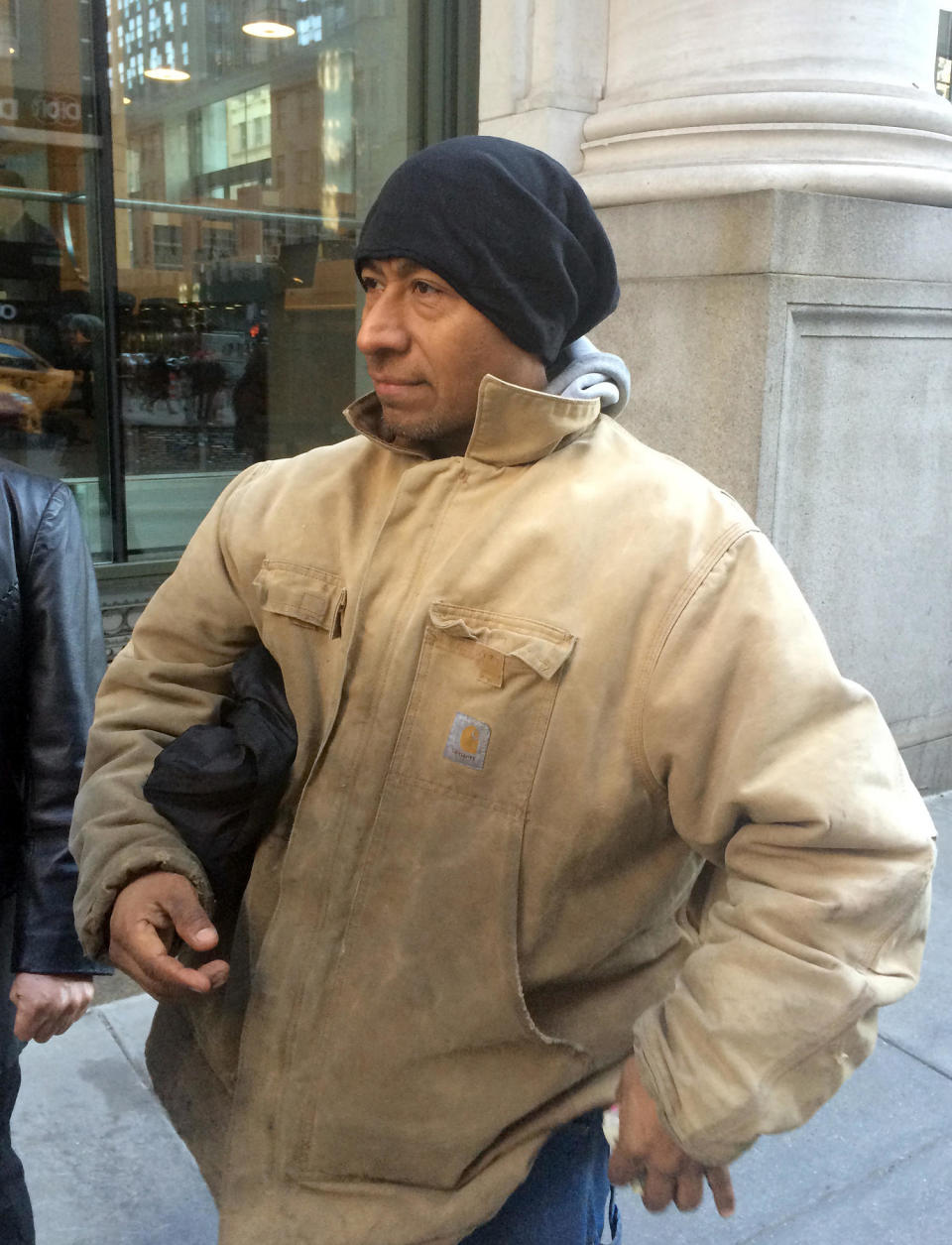Nine years after 43 students from a rural teacher’s college in Mexico disappeared, their parents find themselves in an uphill battle.
“It’s complicated. You’re looking for your son, and the government denies you justice,” Antonio Tizapa, the father of one of the missing students, said in an interview. “If they don’t want us to keep protesting in the streets, tell us where our children are.”
In July, a panel of independent investigators presented evidence in its sixth and last report about the 43 missing students. According to the multiyear investigation, Mexican security forces at the local, state and federal levels at the time “all collaborated to make them disappear.”
Meanwhile, the remains of only three students have been formally identified in the last nine years.
On Sept. 26, 2014, Tizapa’s 20-year-old son, Jorge Antonio, traveled with dozens of classmates from Ayotzinapa Rural Teachers’ College to the city of Iguala in the southwestern state of Guerrero.
The students commandeered buses in Iguala, as they had done other times, to travel roughly 120 miles to Mexico City. They planned to march on the 46th anniversary of the Tlatelolco Massacre to honor hundreds of students whom Mexican police and military officials murdered on Oct. 2, 1968. The students were taken away by local authorities and then disappeared. Their disappearances made international headlines.
The government of President Enrique Peña Nieto at the time initially tried to close the case. It said that local authorities in collusion with a drug cartel arrested the students after they left the bus station and that, according to the testimony of multiple drug traffickers, they had been handed over to Guerreros Unidos, a cartel that murdered them and incinerated their bodies at the Cocula garbage dump.
For more from NBC Latino, sign up for our weekly newsletter.
But the investigative body of the Inter-American Commission on Human Rights helped reopen the case by exposing how authorities tortured suspects to get their testimony.
“This allowed us to continue fighting for justice,” Tizapa said.
Last year, “we were given a video that showed what really happened at the Cocula garbage dump,” he said.
Tizapa referred to new evidence presented last year by the investigative body, the Interdisciplinary Group of Independent Experts, which said the Mexican government at the time intentionally falsified information and withheld leads. Among the evidence were drone photos and video that may have showed Mexican marines staging the area where the students had been reported killed.
The panel’s final report in July said local, state and federal security forces did know about the students’ abductions and were complicit in their disappearances.
Looking back at one of Mexico’s most notorious human rights cases, a member of the panel asked at the July news conference: “How was it possible for it to happen in a small city with two battalions of about 600 men?”
According to the investigation, military commanders and members of two battalions had to have colluded with drug trafficking and organized crime. The panel also said that “without a doubt” police, state agents and other authorities were complicit.
President Andrés Manuel López Obrador has said his administration plans to continue to investigate the case, and he has pointed to the arrests of military officials and other people. The armed forces have denied having any information about the students’ disappearances, Reuters reported last week.
Investigators also said security forces had put the students under surveillance and stigmatized them as insurgents. The negative characterization also influenced the investigation after the disappearances, they said.
The panel emphasized at the news conference that unlike with the allegations by the Mexican security forces, “there’s not a single document that we have analyzed that indicates that the young people were colluding with drug trafficking. Not one.”
Where are they?
For parents, the arrests and the recent findings are not enough.
“With Peña Nieto’s government, they told us our sons were murdered and incinerated,” Tizapa said. “With Obrador, the government tells us: ‘Yes, they took our boys and murdered them. But we don’t know where they are.’ Both governments are telling us practically the same thing.”
Despite the progress that has been made, Tizapa and other families say they still need answers from the government, including the military.
Mario González, the father of another missing student, said in a phone interview Friday: “We met with the president of the republic to ask him to give us the missing information on the whereabouts of our children.
“Unfortunately, the president has empowered the military in Mexico a lot. And he remains stubborn, saying that the military has already handed over everything. So we are now here protesting in front of Mexico’s military headquarters,” González said.
González said the families need the support of the Mexican people to pressure the government to get answers from the military.
“I think what happened awakened the conscience of many people. And nine years later, we still feel the solidarity,” he said.
César Manuel, González’s son, was a 20-year-old freshman at the teacher’s college when he disappeared with classmates in 2014.
González said he believes the Ayotzinapa case can resonate with everyone, because the 43 students were just “chamaquitos,” or young people, who were looking for a better life.
“My son wanted to be a teacher. And I am proud of him. He isn’t perfect. But the teacher’s college gave him what he needed, what he wanted to be,” he said.
González said such schools are often the only pathways available for rural students to secure their futures. And he described the attack on the 43 students as an attack on who they were — and their activism.
This article was originally published on NBCNews.com


